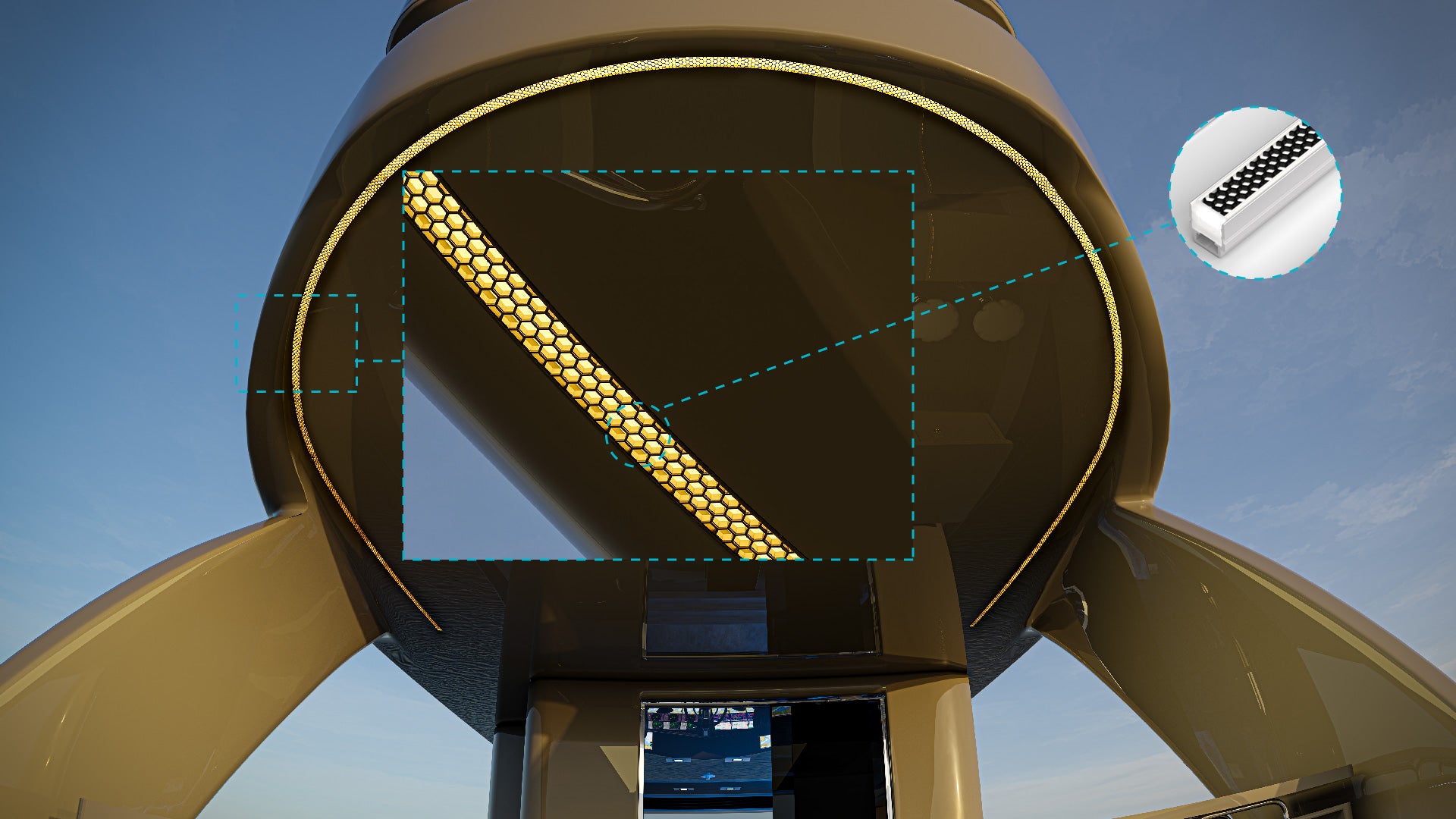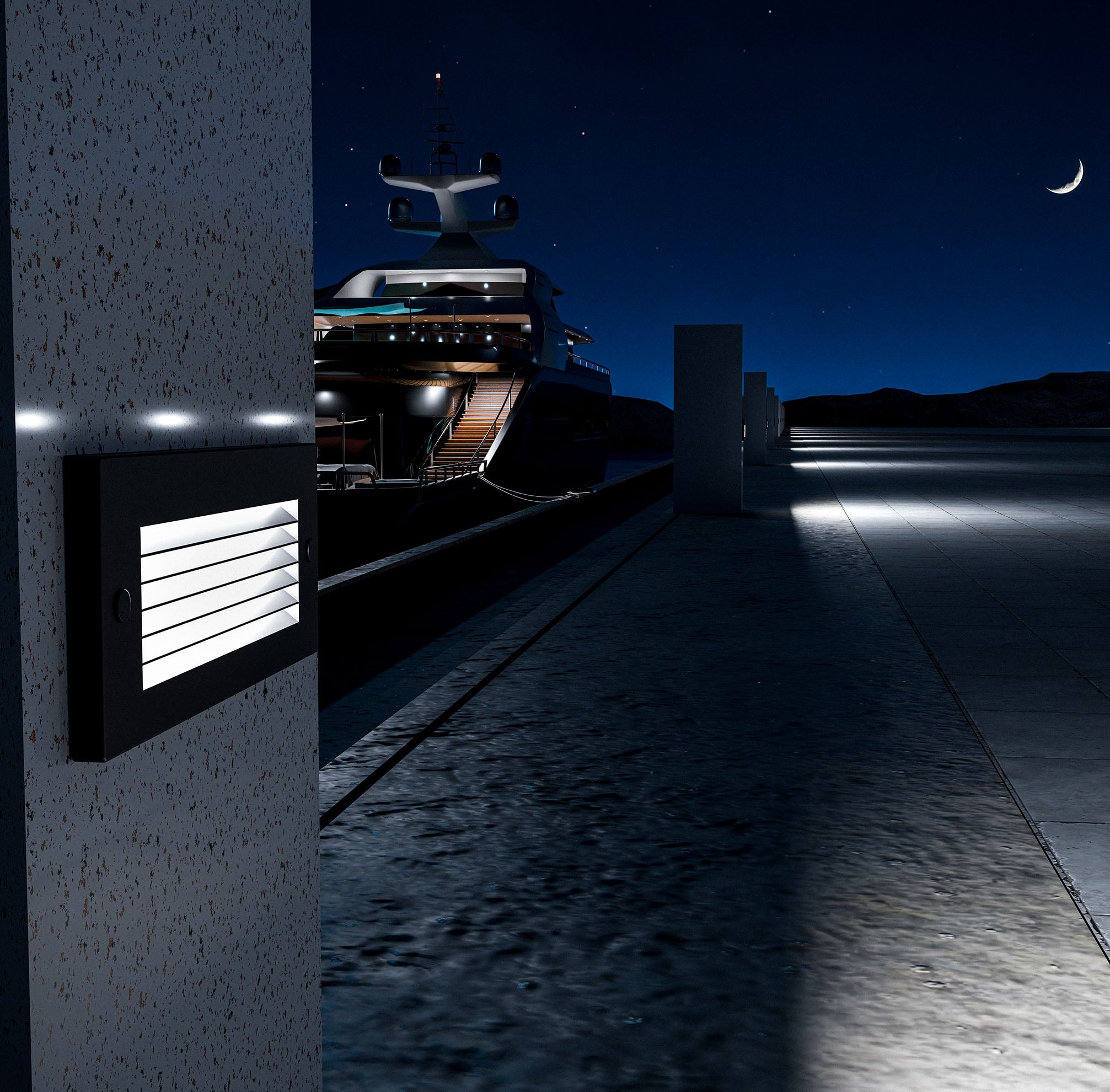Solar-powered LED lighting is an excellent option for boat owners who want to reduce energy consumption, embrace eco-friendly practices, and maintain reliable lighting while off-grid. Solar-powered LED lights are designed to harness the sun’s energy, converting it into electricity stored in rechargeable batteries. This not only helps conserve your boat’s power but also provides an eco-friendly alternative to traditional lighting systems. These lights are ideal for boaters who spend long periods at sea or away from shore power.
In this guide, we’ll walk through the key benefits of solar-powered LED lights for boats, how to choose the right lights, and provide a detailed step-by-step installation process to ensure your lights are safely and efficiently set up.
Why Choose Solar-Powered LED Lights for Your Boat?
Energy Efficiency and Sustainability
Solar-powered LED lights are powered by sunlight, meaning they don’t rely on the boat’s battery system or require shore power to function. They absorb solar energy during the day, converting it into electricity stored in rechargeable batteries. This stored energy powers the lights at night, reducing strain on your boat’s electrical system. For eco-conscious boaters, solar-powered LED lights provide a renewable energy solution that reduces your carbon footprint. By switching to solar-powered LEDs, you contribute to a more sustainable boating experience while enjoying bright, efficient lighting throughout your vessel.
Low Maintenance and Long Lifespan
One of the major advantages of solar-powered LED lighting is its low maintenance requirements. Solar panels automatically recharge the lights during the day, so there’s no need to manually charge or replace batteries frequently. Most solar-powered LED lights come with long-lasting lithium-ion or NiMH batteries that can last for years with minimal upkeep. Once installed, the system requires very little attention. Occasional cleaning of the solar panels is usually the only maintenance needed, making solar-powered LEDs a hassle-free solution for long-term use.
Ease of Installation
Unlike traditional wired lighting systems, solar-powered LED lights do not require extensive electrical wiring or integration into your boat’s existing power supply. Most solar-powered LED lights are designed for easy DIY installation. They come with adhesive backing, mounting brackets, or clips, allowing you to secure them wherever needed. This makes solar-powered LED lights an accessible option for boat owners who want to upgrade their lighting without hiring an electrician or investing in complex electrical work.
Selecting the Right Solar-Powered LED Lights for Your Boat
Choosing the Right Brightness and Color Temperature
When choosing solar-powered LED lights for your boat, it’s important to consider the brightness and color temperature of the lights. Brightness is measured in lumens, and different areas of your boat will require different levels of illumination. For example, navigation lights may need higher lumens (600-1000 lumens) for clear visibility at night, while deck or ambient lighting may require softer lighting (200-400 lumens) to create a relaxed atmosphere. Color temperature also plays a role in creating the right ambiance. Warm white LEDs (2700K-3000K) provide a cozy glow, perfect for cabins or lounging areas, while cool white LEDs (4000K-5000K) offer bright, crisp lighting ideal for workspaces, navigation, or safety areas.
Solar Panel Size and Placement Considerations
The efficiency of solar-powered LED lights depends heavily on the size and placement of the solar panels. The larger the solar panel, the more sunlight it can capture, and the more efficiently it will charge the lights. When selecting your lights, ensure the solar panels are sized appropriately for the amount of sunlight your boat typically receives. For instance, if you sail in sunny regions, small to medium-sized panels may suffice, but for areas with less consistent sunlight, opt for larger panels. Proper placement is also key—solar panels should be installed in open areas where they can receive direct sunlight without obstructions. Ideal locations include the top of the cabin, rails, or the mast, where they are less likely to be shaded by sails or other parts of the boat.
Weather Resistance and Durability
Since solar-powered LED lights will be exposed to harsh marine conditions—such as saltwater, rain, wind, and UV rays—it’s crucial to choose lights specifically designed for marine environments. Look for marine-grade solar-powered LED lights that are waterproof (IP65 or higher) and made from corrosion-resistant materials like stainless steel or UV-resistant plastics. These features ensure that your lights can withstand the rigors of life at sea without deteriorating over time. Durability is key to ensuring that the lights will continue functioning properly even after prolonged exposure to the elements.
Types of Solar LED Lights for Different Applications
Solar-powered LED lights come in various forms, each suited for different applications on your boat. Some popular types include:
- Navigation lights: These lights help you stay visible to other vessels and comply with maritime regulations. Solar-powered LED navigation lights are ideal for off-grid use.
- Deck lights: Illuminate walkways, seating areas, and stairways on your boat. These lights enhance safety and ambiance on deck.
- Cabin lights: Solar-powered LEDs can be used inside cabins to provide soft, ambient lighting without drawing power from the boat’s batteries.
- Underwater lights: These lights create a stunning visual effect around the hull or stern of your boat. Solar-powered versions are great for eco-friendly lighting in marinas or while anchored.
Tools and Materials Needed for Installation
Basic Tools
The tools required for installing solar-powered LED lights are minimal and can typically be found in any standard toolkit. You’ll need a:
- Drill (for securing mounting brackets)
- Screws and screwdriver
- Marine adhesive sealant (to prevent water ingress in holes or around mounting points)
- Mounting brackets or clips (if the lights aren’t adhesive-backed)
Some solar-powered LED lights come with adhesive backing, making installation even easier without the need for drilling.
Materials
Beyond the lights themselves, you’ll need materials like waterproof wiring (if applicable) and corrosion-resistant mounting hardware. These are essential for ensuring that the lights remain securely attached and that any wiring is protected from water exposure. Marine-grade sealants should be used to seal any drilled holes or connections to prevent leaks and corrosion.
Step-by-Step Installation Guide
Step 1: Planning and Choosing Locations
The first step in installing solar-powered LED lights is determining where to place them. This will depend on both where you need illumination and where the solar panels will receive the most sunlight. For example, place navigation lights in visible areas like the bow and stern, while deck lights can be installed along walkways and seating areas. Ensure the solar panels are positioned in unobstructed locations, such as the roof, railings, or mast, where they’ll receive maximum sun exposure. For interior cabin lights, you may need to mount the solar panels outside with a wire connecting to the light inside the cabin.
Step 2: Preparing the Installation Surface
Before installing the lights, clean the surface where they’ll be mounted. This ensures a strong bond for adhesive-backed lights and prevents dust or debris from interfering with screws or mounting brackets. If you’re drilling into the surface of your boat, make sure to clean the area thoroughly and apply marine adhesive sealant around any drilled holes to prevent water from seeping in.
Step 3: Mounting the Solar-Powered LED Lights
For adhesive-backed lights, simply peel the backing and press the light firmly onto the surface. If your lights come with mounting brackets, use a drill to secure the brackets in place, ensuring they’re tightly attached. When mounting the solar panels, angle them toward the sun for maximum charging efficiency. For deck lights, you can use mounting clips or adhesive strips, while navigation or underwater lights may require drilling to secure them properly.
Step 4: Securing and Testing the Lights
Once the lights are mounted, secure any exposed wiring to prevent it from hanging or becoming tangled. Use waterproof connectors if needed. Test the lights by covering the solar panel to simulate nighttime conditions; most solar-powered LED lights have sensors that automatically turn them on when it gets dark. Make sure the lights are functioning correctly before finishing up.
Maintenance and Troubleshooting
Cleaning and Maintaining Solar Panels
To keep your solar-powered LED lights functioning at their best, it’s important to clean the solar panels regularly. Dust, salt spray, bird droppings, and other debris can block sunlight from reaching the panels, reducing their efficiency. Clean the panels with a soft cloth and mild detergent, making sure not to scratch the surface.
Checking Battery Health
If your solar-powered lights use replaceable batteries, check their health periodically to ensure they’re holding a charge. Most rechargeable batteries last 1-2 years before they need replacing. If you notice that the lights are dimming or not staying on as long as they should, it may be time to replace the batteries.
Troubleshooting Common Issues
If your solar-powered LED lights aren’t working as expected, there are a few common issues to check:
- Blocked solar panels: Ensure the panels are receiving direct sunlight and aren’t shaded by sails, rigging, or other obstructions.
- Dirty panels: Clean the panels to ensure maximum sunlight exposure.
- Improper placement: If the lights aren’t turning on at night, check that the solar panel is correctly angled and not facing too far away from the sun.
Enhancing Your Boating Experience with Solar-Powered LED Lighting
Energy Savings
Solar-powered LED lights allow you to enjoy long-lasting illumination without draining your boat’s battery or using shore power. This is especially useful during long trips where conserving power is essential. By reducing your boat’s energy consumption, you can save on fuel and battery expenses in the long run.
Safety and Security Benefits
Proper lighting on a boat is essential for both safety and security. Well-lit decks, walkways, and stairs reduce the risk of accidents during nighttime navigation or while moving around the boat. Additionally, motion-activated solar-powered LED floodlights can be installed near entryways or around the deck to deter potential intruders or alert you to movement on or around your boat.
Eco-Friendly Boating
Solar-powered LED lights contribute to eco-friendly boating by reducing reliance on non-renewable energy sources. Whether you’re cruising or anchored, using solar energy helps lower your carbon footprint, promoting sustainability on the water.
Installing solar-powered LED lights on your boat is a simple and effective way to enhance both the functionality and sustainability of your vessel. With benefits like energy savings, easy installation, and minimal maintenance, these lights provide a practical and eco-friendly solution for boat owners. Explore K2 Lighting’s range of marine-grade solar-powered LED lights and upgrade your boat with efficient, reliable, and environmentally friendly lighting today.





